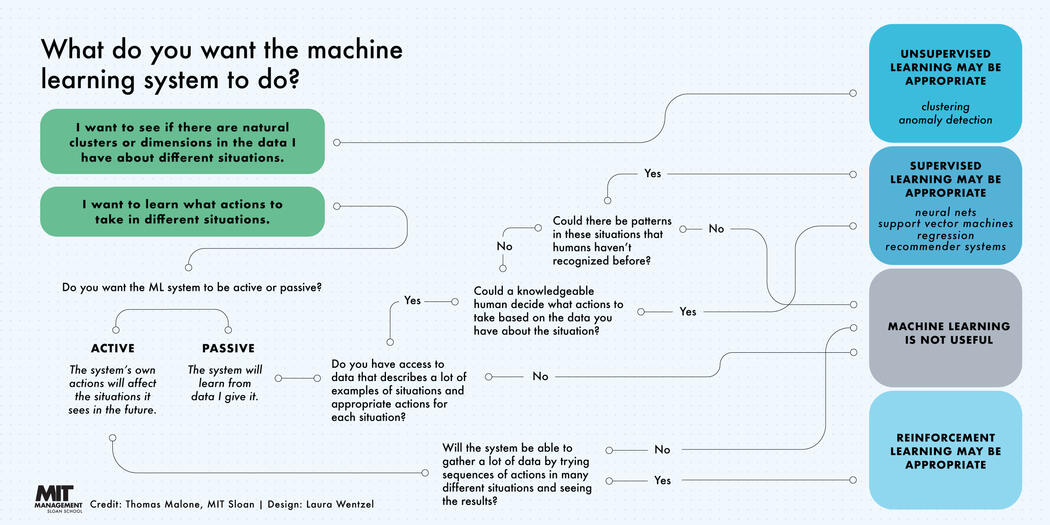Legal Insights Hub
Your go-to source for the latest in legal news and information.
Navigating the Maze of Machine Learning Madness
Unlock the secrets of machine learning! Dive into our guide and conquer the madness with expert tips and insights. Don't miss out!
Understanding the Basics: What is Machine Learning and Why Does it Matter?
Machine Learning is a subset of artificial intelligence that focuses on the development of algorithms that enable computers to learn from and make predictions based on data. Unlike traditional programming where explicit instructions are given, machine learning allows systems to identify patterns and improve their performance over time without being explicitly programmed for each task. This capability is increasingly important as the volume of data available for analysis grows exponentially, making manual data processing impractical.
Understanding the significance of machine learning is crucial in today's data-driven world. Organizations leverage machine learning to enhance operational efficiency, improve customer experiences, and gain competitive advantages. In areas such as healthcare, finance, and marketing, machine learning models can accurately analyze trends, predict outcomes, and automate decision-making processes. As we continue to witness advancements in technology, recognizing the relevance of machine learning will be essential for individuals and businesses alike to stay ahead in their respective fields.

Demystifying Algorithms: A Beginner's Guide to Common Machine Learning Techniques
Demystifying algorithms is crucial in understanding the field of machine learning. At its core, machine learning involves teaching computers to learn from data and make decisions based on that learning. Some of the most common techniques include supervised learning, unsupervised learning, and reinforcement learning. In supervised learning, the algorithm is trained on a labeled dataset, meaning that the input data is paired with the correct output. For example, a model might be trained to identify pictures of cats and dogs by using labeled images.
Unsupervised learning, on the other hand, involves training an algorithm on data with no labeled outcomes. This technique is particularly useful for clustering similar data points and discovering hidden patterns within datasets. Reinforcement learning represents a different approach where an agent learns to make decisions by receiving rewards or penalties based on its actions. All these methods contribute to the diverse world of machine learning, allowing for a range of applications from image recognition to self-driving cars. By understanding these foundational techniques, beginners can start their journey into the fascinating realm of algorithms.
Navigating Challenges: Common Pitfalls in Machine Learning and How to Avoid Them
Navigating Challenges: Machine learning is a powerful tool that can transform industries, yet it often comes with its own set of challenges. One common pitfall is the overfitting of models, where the algorithm learns noise in the training data rather than the actual patterns. To avoid this, practitioners should employ techniques such as cross-validation and pruning, which help ensure that the model generalizes well to unseen data. Furthermore, incorporating regularization methods can prevent the model from becoming too complex and instead promote a simpler, more interpretable solution.
Another significant challenge in machine learning is the bias present in training datasets, which can lead to skewed results and unfair outcomes. To mitigate this risk, data scientists should take deliberate steps to audit their datasets for representation and ensure diversity. It’s essential to implement robust preprocessing techniques that can identify and rectify imbalances before training the model. Additionally, continuous monitoring and validation of the model's performance can help catch potential issues early in the deployment phase.